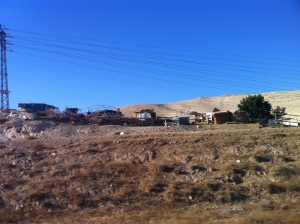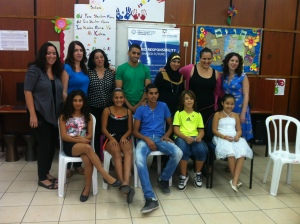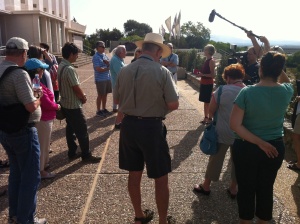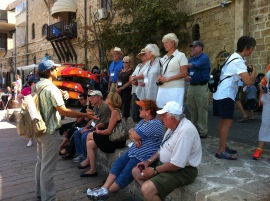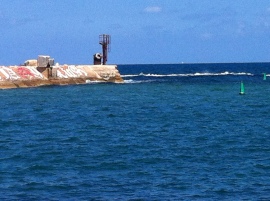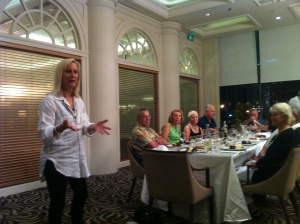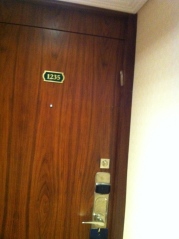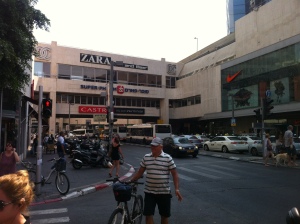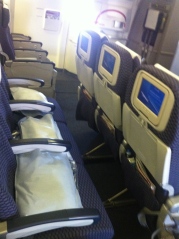Dateline: September 29
So our group tour is over now and several of us are headed home. Others are continuing in Israel. Betty is visiting family. Gayle is off to Eliat and Petra. Tobi, Lonnie and Albert are headed to Tel Aviv. Becky and John are also headed to Tel Aviv. Others are staying around, too. Just want to add a quick thank you to Tobi Taub for her fantastic photos. Several of the photos in this blog are from her. She was our unofficial photographer, taking picts of everything from the sign above the door to the food to the crowd moving from event to event. You have a great eye and thank you for making the visual recording of everything for us.
Thank you to Danielle of Da’at Tours for organizing a great visit and to Lital Yaacob of the JCAA/Federation in Austin for making sure we got off to a great start (and who has spent this time with the Ballet Austin dancers making sure their tour goes off with minimum issues). They made things work behind the scenes and we wanted you to know that we noticed! Thank you, too, to Cookie Ruiz, CEO of Ballet Austin and Jay Rubin, CEO of the JCAA for your leadership and your vision to put this trip together for us.
This last blog is dedicated to our amazing tour guide, Dani Margolis, and our terrific bus driver, Yaacov. Our trip was destined to be great just because of the subject matter and the opportunity to see Ballet Austin perform in Israel. But it was even better because of Dani and Yaacov.
Not only did Dani share the history and facts of every place we visited, but he has skill that goes far beyond just the fact. He’s a great story teller, making the history come alive for us (literally, he did this on Masada with his costumes and sword). He’s a great tour guide, taking us to the ‘greatest hits’ but giving us so much more than just the facts of the places. He had a well-loved copy of the Bible with him, with page markers and passages marked up to make the connection about what we saw with what the Bible says. He’s an empathetic leader, and he was sensitive to each of our conditions, issues, and needs. Nothing dropped through the cracks, whether it was to get to a site or tour on time, or a late checkout of our hotel rooms, or making special arrangements for a side trip, or ensuring I found torah crowns. He was on top of it all. He has his own website, www.danimargolis.com, and is a professional tour guide. You can also follow his adventures on his facebook page here: https://www.facebook.com/EcoToursIsrael
Yaacov was the ‘silent but strong’ partner…always on the ball, always bringing our cool, comfortable bus to us, getting us close to the sites to minimize our walk, waiting patiently for us to be ready to go to the next destination. He called Dani the ‘talking man’…and we loved both of them for all they did for us.
Dani taught us a word/phrase every day. I recorded some of them, but I hope others on the trip will add to this (just add a comment with our other words…). Here’s an updated list (thank you Dani):
Sababa- fantastic (cool)
Para, para- one cow at a time (said pa-rah)
Chataf t’jananah- freak out
Yalla- lets go
Sof haderech- end of the road
Srita Amooka – a deep scratch…he’s loopy!!
Kefak hey!! – hip hip hooray!
Ptzsatsa- the bomb ( good looking lady)
Ezeh Kli- what a tool ( good looking man)
Chai be seret- living in a movie
Rega rega- wait a minute ( with hand signals!)
Lehitraot- see you
Ani gamoor- I’m finished!
Shanty- laid back
Ptzazot legabot-bombs to the eyebrows!
Doogery Doogery- straight in Bedouin!
Ani Ba’ananim- I’m in the clouds ( in heaven!)
Ta’aseh Jesta- do someone a favor
Thank you, Dani and Yaacov! You guys made the trip sababa!















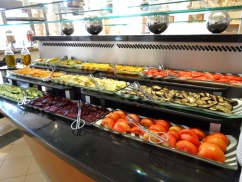







 We continued to walk along this small corridor which is right next to the Western Wall. We found the old streets that used to run along the wall (and the rock panel that was about to have been placed in the street, but was left along the side). We saw some of the other layers of the wall that had been added after the original one. We saw a cistern full of wanter that was used for storing water for the city. All in all, fascinating place.
We continued to walk along this small corridor which is right next to the Western Wall. We found the old streets that used to run along the wall (and the rock panel that was about to have been placed in the street, but was left along the side). We saw some of the other layers of the wall that had been added after the original one. We saw a cistern full of wanter that was used for storing water for the city. All in all, fascinating place.


























